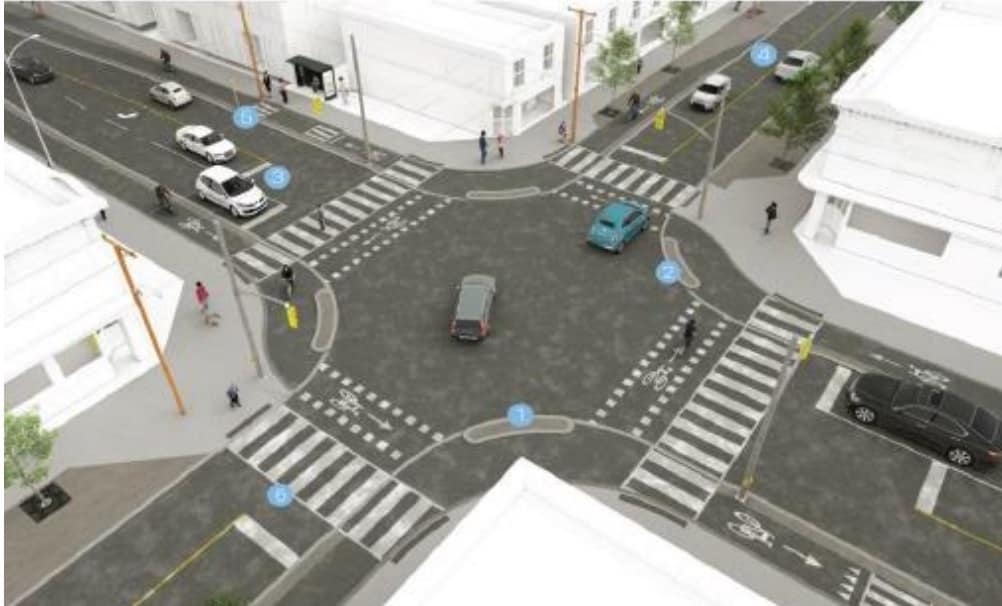Hamilton leaders to hear about, and vote on ‘Complete Streets’
Published July 5, 2022 at 4:10 pm

Tomorrow may test of whether elected leaders in Hamilton have the drive to reroute from the city’s oft-criticized car culture.
Known as the Complete Streets Design Manual, a handbook of principles for designing streets that emphasize all users’ safety, particularly cyclists, pedestrians, children and older adults, will be introduced at a public works committee meeting at 1:30 p.m. on Wednesday afternoon. An overview calls the Complete Streets a concept “to allow people to get around safely no matter their age, ability or how they choose to move.” City council has already voted to approve some of the Complete Streets framework, such as the eight street “typologies” that are part of the plan.
Intersections would also be classified as “low speed” for neighbourhood streets; “compact urban,” generally in downtown areas; and “major high capacity” in more industrial or suburban areas.
While congestion and collisions involving drivers are hardly unique to Hamilton, the nine pedestrian deaths in the first half of 2022 have already matched the 10-year high set in 2021. The number of collisions in the city in 2021 increased over the previous year, with the injury rate in both pandemic-affected years surpassing 2019.
Historically, the abundance of one-way streets, which were adopted in 1956 during the post-Second World War economic boom, are often linked with a decline of the downtown. James Street North, which became two-way in 2005, is seen as one example of urban revitalization.
The report, which council would likely vote on tomorrow, with potential amendments, adds that each street should create “a sense of place,” and giving priority to motorists defeats that purpose.
“While roads have historically been planned with motorists at the top of the hierarchy, Complete Streets aims to provide more consideration for pedestrians, cyclists, and transit users so that they may feel equally part of the roadway design, a vital component of Vision Zero goals. This contributes to the idea that streets do not just facilitate movement but also a sense of place. A sense of safety and ease of access contributes to a desire to casually walk and linger along certain streets, thereby contributing to a place’s sense of vibrancy and attractiveness.”
The principles also include the idea to “account for equity.” It notes that Hamilton has many “high-volume, high-speed
roadways that travel through or adjacent to communities with a higher proportion of communities that have been marginalized,” adding it brings residents of those neighbourhoods, “more risk in the form of air pollution, noise pollution and elevated crash risk than it generates in benefits in the form of improved mobility.”
City councillors have already voted this year for a conversion study regarding switching Main Street from a one-way, five-lane thoroughfare to two-way traffic from King St. E. to Longwood Road. A ring-road truck route master plan has also been approved to keep heavy industrial trucks off of downtown streets, including some that have elementary schools built along them.
Two months ago, council also directed staff to look into how 31 recommendations on travel options from the Bay Area Climate Change Council (BACCC) could be implemented.
The climate action group advocates for ways to help the Hamilton-Burlington area reach a stated goal of net-zero carbon emissions by 2050. Using Google Data, the BACCC said 96 per cent of trips in Hamilton are taken by individual car.
The full 186-page Complete Streets Design Manual is available online, along with a planned presentation.
insauga's Editorial Standards and Policies advertising





